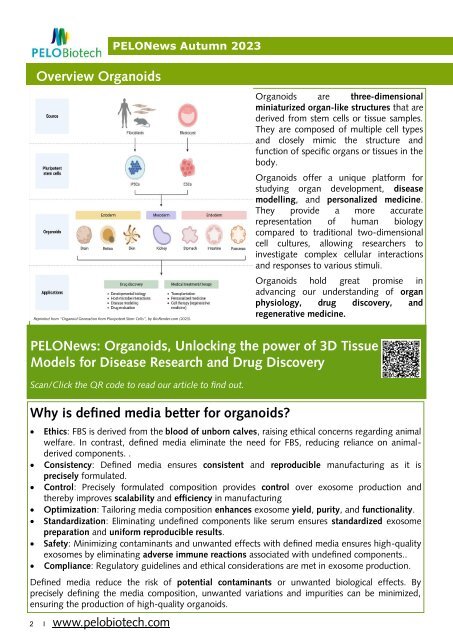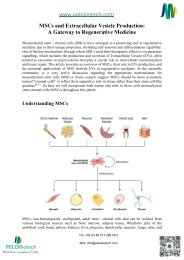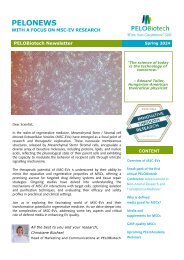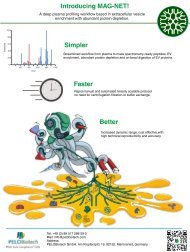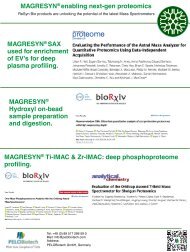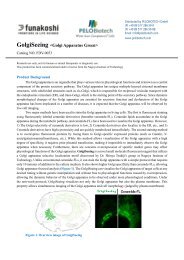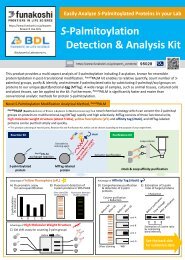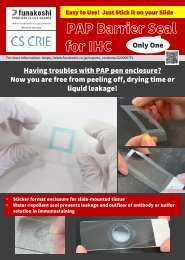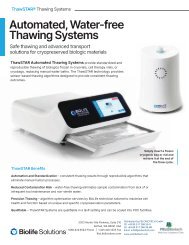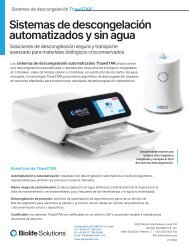Create successful ePaper yourself
Turn your PDF publications into a flip-book with our unique Google optimized e-Paper software.
Overview Organoids<br />
PELONews <strong>Autumn</strong> <strong>2023</strong><br />
Reprinted from “Organoid Generation from Pluripotent Stem Cells”, by BioRender.com (<strong>2023</strong>).<br />
Organoids are three-dimensional<br />
miniaturized organ-like structures that are<br />
derived from stem cells or tissue samples.<br />
They are composed of multiple cell types<br />
and closely mimic the structure and<br />
function of specific organs or tissues in the<br />
body.<br />
Organoids offer a unique platform for<br />
studying organ development, disease<br />
modelling, and personalized medicine.<br />
They provide a more accurate<br />
representation of human biology<br />
compared to traditional two-dimensional<br />
cell cultures, allowing researchers to<br />
investigate complex cellular interactions<br />
and responses to various stimuli.<br />
Organoids hold great promise in<br />
advancing our understanding of organ<br />
physiology, drug discovery, and<br />
regenerative medicine.<br />
PELONews: Organoids, Unlocking the power of 3D Tissue<br />
Models for Disease Research and Drug Discovery<br />
Scan/Click the QR code to read our article to find out.<br />
Why is defined media better for organoids?<br />
• Ethics: FBS is derived from the blood of unborn calves, raising ethical concerns regarding animal<br />
welfare. In contrast, defined media eliminate the need for FBS, reducing reliance on animalderived<br />
components. .<br />
• Consistency: Defined media ensures consistent and reproducible manufacturing as it is<br />
precisely formulated.<br />
• Control: Precisely formulated composition provides control over exosome production and<br />
thereby improves scalability and efficiency in manufacturing<br />
• Optimization: Tailoring media composition enhances exosome yield, purity, and functionality.<br />
• Standardization: Eliminating undefined components like serum ensures standardized exosome<br />
preparation and uniform reproducible results.<br />
• Safety: Minimizing contaminants and unwanted effects with defined media ensures high-quality<br />
exosomes by eliminating adverse immune reactions associated with undefined components..<br />
• Compliance: Regulatory guidelines and ethical considerations are met in exosome production.<br />
Defined media reduce the risk of potential contaminants or unwanted biological effects. By<br />
precisely defining the media composition, unwanted variations and impurities can be minimized,<br />
ensuring the production of high-quality organoids.<br />
2 I www.pelobiotech.com


